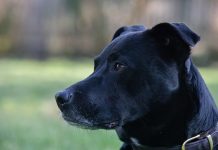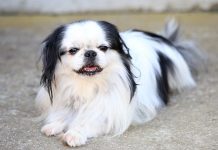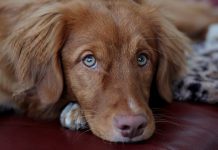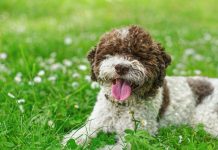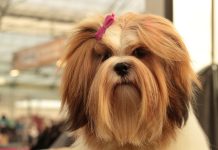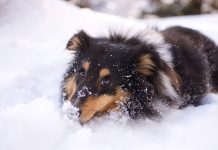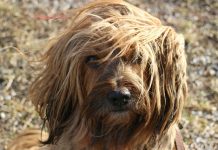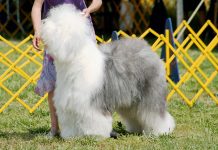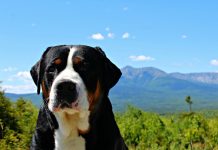History and Origins of the Great Dane Breed

The Great Dane is a majestic and imposing breed with a rich history that dates back centuries. Here’s an overview of their fascinating origins:
- Ancient Roots: The history of the Great Dane traces back to ancient civilizations like Egypt, where depictions of large, mastiff-like dogs resembling Great Danes have been found in art and artifacts.
- German Origins: Despite its name, the Great Dane breed as we know it today originated in Germany. The breed was developed through crossbreeding of various mastiff-type dogs with Irish Wolfhounds, resulting in a powerful and agile dog known for its hunting prowess.
- Hunting and Guard Duties: Initially, Great Danes were used for hunting wild boar and other large game. They were also employed as estate guard dogs due to their intimidating size and protective nature.
- Name Evolution: The breed was initially known as the “German Boarhound” or “German Mastiff.” In the 19th century, a French naturalist named Buffon referred to them as “grand Danois,” which means Great Dane, and the name stuck.
- Noble Connections: Great Danes gained popularity among European nobility and were often kept as estate guardians and companions by royalty and aristocrats.
- Standardization: The breed’s characteristics were standardized in the late 19th century, and the Great Dane was recognized as a distinct breed by kennel clubs.
Physical Characteristics and Appearance of Great Danes
Great Danes are distinguished by their imposing stature, graceful build, and gentle expression. Here are the key physical characteristics of the breed:
- Size: Great Danes are one of the largest dog breeds, known for their impressive height. Males typically stand between 30 to 34 inches (76 to 86 cm) tall at the shoulder, while females are slightly smaller at 28 to 32 inches (71 to 81 cm). They are often referred to as the “Apollo of dogs” due to their noble appearance.
- Weight: Adult Great Danes can weigh anywhere from 140 to 175 pounds (63 to 79 kg) for males and 110 to 140 pounds (50 to 63 kg) for females. Despite their size, they are generally well-proportioned and athletic.
- Build: Great Danes have a muscular and sturdy build, with a deep chest and a sleek, athletic physique. They possess a long, elegant neck and powerful legs that convey strength and grace.
- Head and Expression: The head is large and square-shaped, with a distinctive, noble expression. The ears are medium-sized, set high, and can be cropped or left natural. The eyes are dark, reflecting a gentle and alert demeanor.
- Coat and Colors: Great Danes have a short, dense coat that comes in various colors including fawn, brindle, blue, black, harlequin (white with irregular black patches), and mantle (black and white with a solid black blanket over the body).
- Temperament: Despite their imposing size, Great Danes are known for their gentle and friendly disposition. They are affectionate, good-natured, and typically get along well with children and other pets.
Overall, the Great Dane is a breed that combines elegance, strength, and a loving temperament, making them excellent companions for families who can accommodate their size and exercise needs.
Great Dane Temperament and Personality Traits
Great Danes are beloved for their gentle and friendly temperament despite their imposing size. Understanding their personality traits is key to appreciating this magnificent breed:
- Gentle Giants: Great Danes are known as “gentle giants” due to their calm and affectionate nature. They are typically friendly and good-natured, making them excellent family companions.
- Affectionate: Great Danes are very affectionate and often seek close physical contact with their human family members. They thrive on companionship and enjoy being part of the family.
- Friendly: They are generally friendly towards strangers, although their size alone can be a deterrent to intruders. Proper socialization from a young age helps reinforce their friendly disposition.
- Loyal: Great Danes are loyal and devoted to their families. They are protective of their loved ones and can make effective watchdogs due to their imposing size and alertness.
- Mellow Demeanor: Despite their size, Great Danes have a relatively mellow demeanor. They are not overly energetic like some other large breeds and are content to relax indoors with their family.
- Sensitivity: Great Danes are sensitive dogs and respond well to positive reinforcement training methods. Harsh training techniques can be counterproductive and may cause them to become withdrawn.
- Good with Children: Great Danes are typically good with children, although due to their size, supervision is always recommended to prevent accidental knocking over of small children.
Training and Socialization Needs for Great Danes
Training and socialization are crucial for raising a well-adjusted Great Dane. Here are some key considerations:
- Early Socialization: Start socializing your Great Dane puppy early to expose them to different people, animals, environments, and experiences. This helps prevent shyness or fearfulness as they grow older.
- Positive Reinforcement: Use positive reinforcement techniques such as treats, praise, and toys to motivate and reward desired behaviors. Great Danes are sensitive and respond best to gentle, patient training methods.
- Obedience Training: Enroll your Great Dane in obedience classes to establish basic manners and commands. Consistency and patience are key when training this breed.
- Gentle Handling: Due to their size, it’s important to handle Great Danes gently and avoid rough play or physical corrections that can cause injury or fear.
- Exercise Needs: While Great Danes are not overly active, they still require regular exercise to maintain muscle tone and prevent obesity. Daily walks and playtime in a secure area are essential.
- Behavioral Challenges: Great Danes can be prone to separation anxiety if left alone for long periods. They thrive on human companionship and do best in homes where they are not left alone for extended periods.
- Health Considerations: Due to their rapid growth rate, be mindful of feeding and exercise routines to prevent joint and bone issues common in large breeds.
By providing proper training, socialization, and care, Great Danes can thrive as loving and well-mannered companions. Their gentle nature and affectionate demeanor make them cherished members of many households.
Health Considerations and Common Issues in Great Danes

Great Danes are a large and robust breed, but like all dogs, they are prone to certain health issues. Being aware of these considerations can help you provide the best care for your Great Dane:
- Growth-Related Problems: Great Danes experience rapid growth during puppyhood, which can lead to musculoskeletal issues such as hip dysplasia, elbow dysplasia, and osteochondrosis (affecting joint cartilage development).
- Gastric Dilatation-Volvulus (GDV): Also known as bloat, GDV is a serious condition that can affect deep-chested breeds like Great Danes. It involves the stomach filling with gas and twisting, which requires immediate veterinary attention.
- Cardiac Issues: Great Danes are susceptible to certain heart conditions, including dilated cardiomyopathy (enlarged heart), which can affect their overall health and lifespan.
- Hypothyroidism: This condition occurs when the thyroid gland doesn’t produce enough hormones, leading to symptoms like weight gain, lethargy, and skin issues.
- Bone Cancer: Great Danes have an increased risk of developing bone cancer (osteosarcoma), particularly in the limbs. Early detection and treatment are crucial for managing this aggressive cancer.
- Eye Conditions: Great Danes may be prone to certain eye problems such as progressive retinal atrophy (PRA) and cataracts, which can affect their vision over time.
- Wobbler Syndrome: This neurological condition is characterized by compression of the spinal cord in the neck area, leading to weakness and instability in the hind limbs.
Regular veterinary check-ups, proper nutrition, and responsible breeding practices can help minimize the risk of these health issues in Great Danes.
Living with a Great Dane: Suitable Environments and Lifestyle Considerations
Great Danes are adaptable dogs but require specific considerations due to their size and temperament. Here’s what to keep in mind when living with a Great Dane:
- Space Requirements: Great Danes are large dogs and need ample space to move around comfortably. They can adapt to apartment living if provided with regular exercise, but a spacious home with a fenced yard is ideal.
- Exercise Needs: Despite their mellow demeanor, Great Danes still need daily exercise to stay healthy and prevent obesity. Regular walks, playtime, and mental stimulation are essential.
- Climate Considerations: Great Danes are sensitive to extreme temperatures. Provide them with a comfortable indoor environment during hot summers and adequate warmth during cold winters.
- Grooming: Great Danes have short coats that are easy to maintain. Regular brushing to remove loose hair and occasional baths are usually sufficient to keep them clean.
- Training and Socialization: Early training and socialization are crucial for Great Danes to develop good manners and confidence. Positive reinforcement techniques work best with this sensitive breed.
- Health Care: Stay vigilant about your Great Dane’s health by scheduling regular vet visits, maintaining a balanced diet, and monitoring for any signs of health issues.
- Family Dynamics: Great Danes are gentle and affectionate dogs that thrive on companionship. They do well in families where they receive plenty of attention and love.
By understanding the unique needs and characteristics of Great Danes, you can create a suitable and enriching environment for them to thrive as beloved family members. Always consult with your veterinarian for personalized advice on caring for your Great Dane’s health and well-being.
Great Dane Variations and Breeding Practices
Great Danes are a fascinating breed with various coat colors and patterns, as well as specific breeding practices aimed at maintaining breed standards and health. Let’s explore the variations and breeding practices associated with Great Danes:
Variations in Great Danes
Great Danes exhibit several variations in coat color and patterns, which contribute to their unique appearance. Some of the common variations include:
- Fawn: This is the most common color in Great Danes, ranging from light golden to deep reddish-gold shades. Fawn Danes may have a black mask on their face.
- Brindle: Brindle Great Danes have a striped pattern on their coat, usually with a base color of fawn or black. The stripes can be black, brown, or a combination of both.
- Black: Solid black Great Danes have a striking appearance with a glossy black coat. They may have white markings on the chest and toes.
- Blue: Blue Danes have a steel-blue or greyish coat, which is a dilute of the black color gene. They often have black noses and dark eyes.
- Harlequin: Harlequin Great Danes are predominantly white with irregular black patches or spots on their bodies. The patches should be well-distributed and not excessive.
- Mantle: Mantle Danes have a black coat with a white chest, muzzle, and sometimes white on the legs and tail. The coat pattern resembles a black blanket draped over the body.
Breeding Practices for Great Danes
Breeding Great Danes requires careful consideration of health, temperament, and adherence to breed standards. Responsible breeders focus on maintaining and improving the breed while minimizing health risks. Here are key breeding practices for Great Danes:
- Health Screening: Before breeding, both the male and female Great Danes should undergo thorough health screenings to check for genetic conditions such as hip dysplasia, cardiac issues, and eye problems. This helps reduce the risk of passing on hereditary diseases to offspring.
- Temperament Assessment: Great Danes are known for their gentle and friendly temperament. Responsible breeders prioritize breeding dogs with stable and predictable temperaments to produce well-adjusted puppies.
- Conformation Standards: Breeders adhere to the American Kennel Club (AKC) or other kennel club standards for Great Danes regarding size, structure, and appearance. This includes characteristics such as height, weight, coat color, and proportions.
- Avoiding Oversized Dogs: Great Danes should be large and powerful but not excessively oversized. Breeding for extreme size can lead to health problems and reduced lifespan.
- Ethical Practices: Responsible breeders prioritize the health and well-being of their dogs and puppies. They provide proper care, nutrition, socialization, and veterinary attention to ensure healthy and happy dogs.
- Breeding Goals: The goal of breeding Great Danes should be to produce puppies that are physically and mentally sound, conform to breed standards, and make excellent companions and show dogs.
- Ethical Placement of Puppies: Responsible breeders carefully screen potential owners and provide lifelong support to ensure their puppies go to loving and suitable homes.
By following responsible breeding practices and focusing on health, temperament, and adherence to breed standards, breeders contribute to the preservation and betterment of the Great Dane breed. Potential Great Dane owners should seek out reputable breeders who prioritize the welfare of their dogs and adhere to ethical breeding practices.
50 Best Names with Meanings for Great Danes
Naming your Great Dane is an exciting part of welcoming them into your family. Here’s a curated list of 50 great names with meanings that could suit this majestic breed:
- Titan – Represents strength and power, fitting for a large breed like the Great Dane.
- Athena – Named after the Greek goddess of wisdom and courage.
- Thor – Inspired by the Norse god of thunder, symbolizing strength.
- Juno – Named after the Roman goddess, often associated with protection.
- Zeus – The powerful king of the gods in Greek mythology.
- Valkyrie – Norse mythological figures who chose those slain in battle.
- Odin – The chief god in Norse mythology, known for his wisdom and strength.
- Sable – Refers to a dark coat color, suitable for a Great Dane.
- Apollo – The Greek god of light and the sun, representing beauty and grace.
- Luna – Latin for “moon,” perfect for a Great Dane with a calm demeanor.
- Tank – Reflects the size and strength of a Great Dane.
- Venus – Named after the Roman goddess of love and beauty.
- Goliath – A biblical figure known for his size and strength.
- Nova – Latin for “new,” ideal for a lively and energetic Dane.
- Jasper – A gemstone name symbolizing strength and endurance.
- Zara – Means “princess” in Arabic, suitable for a regal Great Dane.
- Bruno – Means “brown” in German, fitting for a Dane with a brown coat.
- Stella – Latin for “star,” ideal for a shining and beloved companion.
- Hercules – The legendary hero known for his incredible strength.
- Nyx – Named after the Greek goddess of the night.
- Echo – Denotes a repeating sound, fitting for a responsive Dane.
- Arya – Inspired by the courageous character from “Game of Thrones.”
- Moose – A fun and fitting name for a large and lovable Great Dane.
- Ivy – Symbolizes strength and determination.
- Orion – Named after a constellation, representing power and greatness.
- Sasha – Means “defender of mankind,” ideal for a protective Dane.
- Hugo – Means “intelligence” and “mind” in Old French.
- Harley – A spirited and lively name for an energetic Dane.
- Athena – The wise and strategic goddess of warfare in Greek mythology.
- Maverick – Represents an independent and free-spirited nature.
- Gypsy – Reflects a wanderlust spirit and sense of adventure.
- Jagger – Inspired by the rock legend Mick Jagger, known for charisma.
- Zara – Means “princess” in Arabic, suitable for a regal and elegant Dane.
- Harlow – A stylish and sophisticated name, perfect for a Great Dane.
- Kai – Hawaiian for “sea,” ideal for a free-spirited and adventurous Dane.
- Saber – Represents strength and agility, fitting for a powerful Dane.
- Nala – Swahili for “gift,” ideal for a cherished companion.
- Bruno – Means “brown” in German, suitable for a Dane with a brown coat.
- Astrid – A strong and noble name meaning “divine strength” in Old Norse.
- Juno – Named after the Roman goddess, often associated with protection.
- Rocco – Represents strength and determination.
- Luna – Latin for “moon,” perfect for a Dane with a calm demeanor.
- Loki – Inspired by the mischievous Norse god of trickery.
- Kona – Hawaiian for “lady,” ideal for a graceful female Dane.
- Blaze – Signifies intensity and enthusiasm.
- Xena – Inspired by the fearless warrior princess from TV.
- Diesel – A strong and powerful name, suitable for a robust Dane.
- Phoebe – Greek for “bright” and “shining,” ideal for a cheerful Dane.
- Rex – Latin for “king,” fitting for a confident and regal Dane.
- Zephyr – Means a gentle, mild breeze, highlighting their swift movements.
Choose a name that resonates with your Great Dane’s personality, appearance, and the qualities you admire. Whether you prefer a name that reflects strength, intelligence, or elegance, there’s a perfect name waiting for your majestic companion.

In conclusion, this comprehensive guide to Great Dane dogs has provided a detailed overview of this majestic and gentle breed. Throughout our exploration, we’ve delved into the history, distinctive characteristics, and essential care considerations that define Great Danes. Known for their impressive size, graceful appearance, and friendly demeanor, Great Danes make wonderful companions for families and individuals seeking a loyal and affectionate pet. They are known for their gentle nature despite their imposing stature and require proper training and socialization to thrive. As you embark on your journey with a Great Dane, may you appreciate their unique qualities and form a strong bond with this remarkable breed, creating lasting joy and companionship together.







